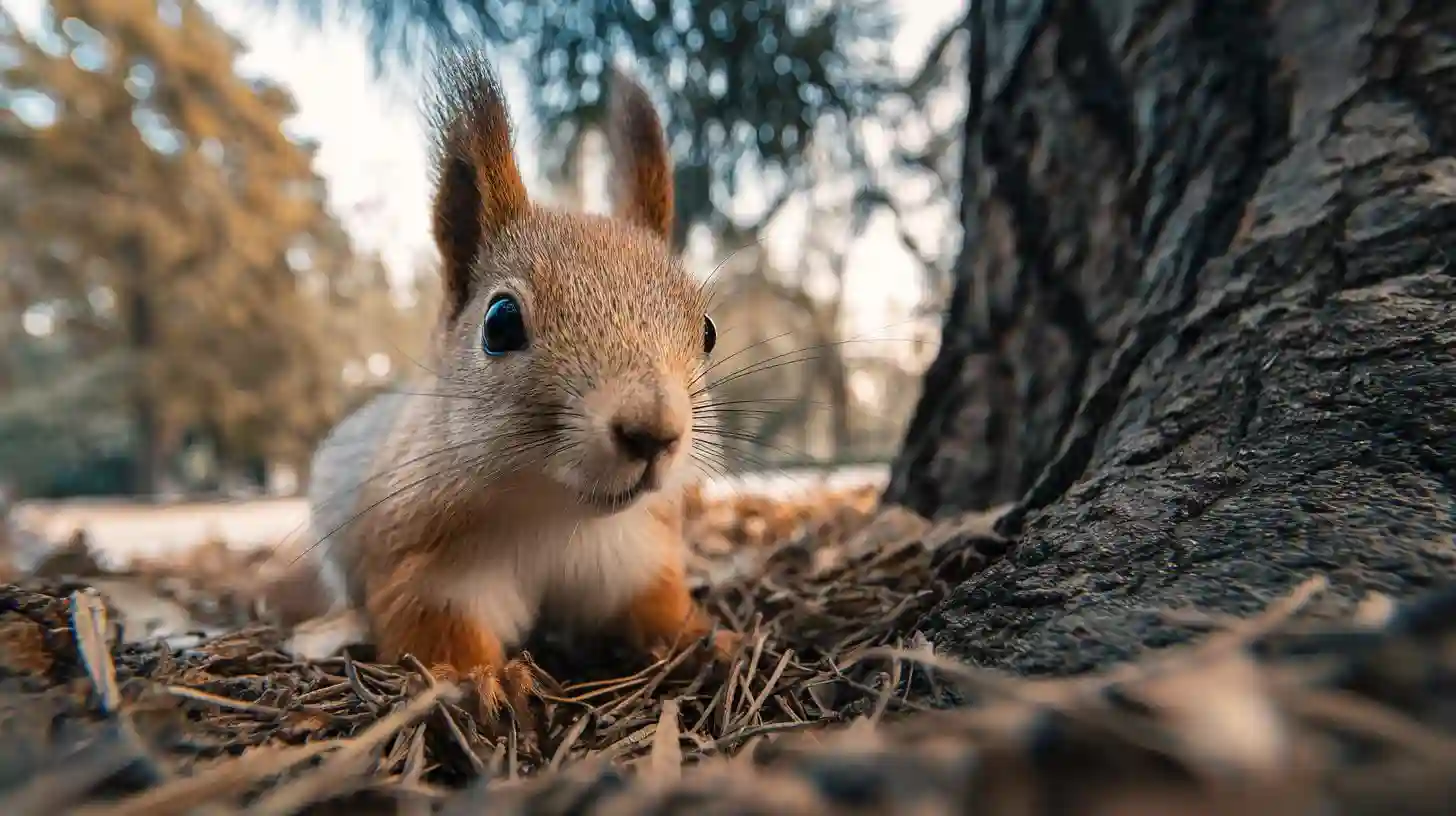
Squirrels are among the most adaptable and resourceful animals in the urban landscape, often seen darting between trees, scaling buildings, and foraging for food in city parks. These small, agile creatures have made a home in places where one might least expect to find wildlife. Their presence in urban areas is a testament to their remarkable ability to thrive in environments shaped by human activity.
Urban squirrels, particularly the Eastern gray squirrel, have become expert survivors in cities, adapting to the fast-paced, often chaotic surroundings. These squirrels have a keen sense of observation and have learned to navigate complex urban environments, from bustling streets to towering skyscrapers. Their sharp memory allows them to remember the locations of their food caches, sometimes hidden in cracks of buildings or beneath city benches. They are particularly adept at using man-made structures as launching pads for their acrobatic feats, leaping from tree to rooftop or utility wire with impressive precision.
Foraging is one of the most intriguing behaviors of urban squirrels. Unlike their rural cousins who can rely on forests or rural fields for food, city squirrels have adapted their diets to include a wide variety of food scraps, from discarded fast food wrappers to birdseed left out by well-meaning residents. They are opportunistic feeders, often seen rummaging through trash bins or hanging around outdoor cafés, hoping to snatch up any leftover crumbs. In addition to human food, they still forage for acorns, nuts, and seeds from trees, and some urban squirrels have even learned to crack open tougher nuts by using the concrete surfaces as tools. These adaptations allow them to survive even in areas where natural food sources might be limited.
Communication among urban squirrels is another fascinating aspect of their behavior. While they may seem solitary, squirrels do interact with each other through a variety of vocalizations, body language, and scent marking. One of their most well-known vocalizations is the sharp "warning" call, often used when they sense a threat, such as a predator or an approaching human. This call is a high-pitched, chattering noise that is usually accompanied by a tail flick, a signal to other squirrels in the area to be alert. Squirrels also use scent marking to claim territory, rubbing scent glands near their tails against tree bark, posts, or other surfaces. This helps to establish their presence and deter other squirrels from encroaching on their space.
In urban environments, squirrels also interact with other species. They often share their territory with pigeons, rats, and even stray cats. Squirrels have learned to coexist with these other creatures, often adapting their behaviors to avoid confrontation. They are incredibly agile, using their climbing skills to evade predators like cats, while keeping a safe distance from dogs and other threats. At times, they might even compete with other animals for food resources, particularly in densely populated areas where food is scarce.
Despite the challenges posed by urban living, squirrels manage to build nests, known as dreys, in a variety of locations. These nests are often found in the branches of trees, but in cities, squirrels have been known to build dreys in less traditional spots, such as in the eaves of buildings or within the insulation of attics. The construction of a drey involves the squirrel gathering twigs, leaves, and other materials to create a warm, protected space where they can rest and sleep. These dreys serve as both a refuge from predators and a safe haven for raising young squirrels. Urban squirrels have become particularly adept at finding safe nesting spots in densely populated areas, where traditional tree cavities might not be available.
The relationship between urban squirrels and humans can be a complex one. While many people enjoy watching these animals and may even leave out food to attract them, others view them as pests. Squirrels, in their constant search for food, can sometimes cause damage to property, such as chewing through wires or nesting in attic spaces. Despite this, many city dwellers appreciate the presence of squirrels, finding their antics both amusing and endearing. Squirrels have become a part of the urban ecosystem, adding a touch of nature to the concrete jungle.
Squirrels, in all their variety, continue to be a symbol of resilience and adaptability. Their ability to thrive in cities, despite the challenges they face, speaks to their intelligence and their deep connection to the natural world. Observing them in urban spaces offers a unique opportunity to witness the remarkable ways animals can adapt to the ever-changing environments humans create. The squirrel’s life in the city, full of resourcefulness, agility, and persistence, serves as a reminder that even in the most unlikely of places, wildlife finds a way to survive.